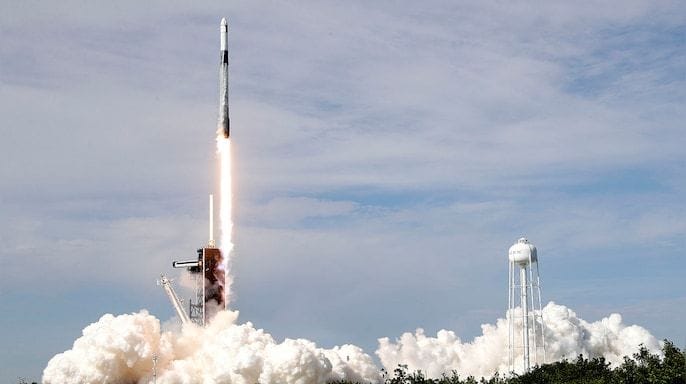The recent SpaceX Starship explosion wasn’t just a blast. It was a dramatic reminder that even the boldest missions to Mars come with fiery setbacks. While Elon Musk’s vision of interplanetary travel pushes boundaries, this explosion raised eyebrows and questions worldwide. But is it failur, or just one more step toward something legendary?
Starship Explosion Overview
In June 2025, a major incident involving the SpaceX Starship drew attention from around the globe. The event took place during a test flight of the fully integrated Starship rocket and Super Heavy booster at the Starbase launch site in Texas. As SpaceX continues to push boundaries in space innovation, this explosion marked a significant challenge in their efforts to develop a reusable launch system for future Mars missions. While the incident was a setback, it also served as a learning opportunity for the company, which remains determined to send humans to Mars using its Starship spacecraft.
What Caused the Starship Explosion?
The Starship explosion occurred due to a failure of a pressurized tank, as SpaceX said in an official statement. Specifically, the COPVs used on Starship experienced a rupture during a static fire test on the test stand at Starbase. This caused the upper stage of Starship 36 to violently explode. Although the explosion marks a serious issue, SpaceX confirmed that all personnel are safe and accounted for, and that safety around the test site and the immediate area was maintained throughout the operation.
How the Explosion Marks a Setback for SpaceX
This massive rocket explosion represents a technical and symbolic setback for Elon Musk’s SpaceX, particularly as it prepares for crewed missions and collaboration with NASA. The Starship test was part of a broader effort to qualify the vehicle for its mission to deliver cargo and astronauts to the Moon and Mars. As SpaceX’s Starship rocket aims for long-term interplanetary travel, the failure highlights the challenges of rapid iteration and experimental hardware in high-stakes test flights.
Initial Reactions to the Starship Spacecraft Failure
The global space news community reacted quickly to the incident. Experts acknowledged that while the Starship exploded, the process of building a robust Starship prototype involves risk. Online forums and scientific discussions emphasized how such test anomalies are part of innovation. Meanwhile, Elon Musk responded on social media, noting that this setback is a step toward building the next Starship, which will integrate lessons from the explosion.
Did you know the Starship spacecraft is designed to carry over 100 people to Mars?
The Starship Spacecraft Design

The Starship vehicle, composed of the Starship upper stage and the Super Heavy booster, is central to SpaceX’s vision for future space travel. This spacecraft is designed for full reusability, offering reduced launch costs and high-frequency flights.
Key Features of the Starship Rocket
The Starship rocket stands out for its stainless-steel design, heat shield tiles, and advanced Raptor engines. It is capable of carrying over 100 metric tons into orbit. The full Starship spacecraft system is meant to launch from Earth, refuel in orbit, and continue to the Moon, Mars, or beyond.
Read about Apple Vision Pro Review
Evolution of the Starship Spacecraft Over Time
Since its early days, the Starship prototype has undergone multiple design changes. From Starship version 2 to Starship flight 9, SpaceX has continuously upgraded structural integrity, thermal protection systems, and engine performance. The latest Starship iterations are built to withstand deep-space missions and return intact.
Safety Measures Built into Starship
Safety is crucial for a vehicle that may carry humans to Mars. SpaceX has added multiple redundancies to the Starship test missions, including automated abort systems and enhanced monitoring. The explosion will likely prompt even more robust updates to ensure that future test flights avoid similar failures.
Timeline of the Explosion Incident
The tenth flight test experienced a major anomaly while on a test, according to SpaceX. It began as a routine test flight at the test site, with systems performing nominally until the upper stage failure.
Events Leading to the Explosion
On June 18, Starship 36 was preparing for the tenth integrated test flight when systems began to show irregular pressure readings. Moments later, the starship exploded, resulting in a fiery blast that shook the launch site. Engineers quickly initiated emergency protocols.
Real-Time Data from the Starship Launch
Live telemetry showed deviations in tank pressure and Raptor engine performance. SpaceX said these indicators suggest a likely failure in internal pressurization. Cameras at the test site captured the explosion in real-time, now widely circulated in news reports.
Did you know the Starship explosion in 2023 happened just four minutes after liftoff?
Post-Explosion Analysis and Recovery Efforts
Following the Starship explosion, teams began recovery and data review. Debris analysis at the test site and black box data extraction are part of current efforts. Despite the rocket explosion, SpaceX emphasized that all safety protocols were followed, and that work continues on the next Starship.
Impact on SpaceX’s Mars Mission

The Starship to Mars plan depends on a fully operational vehicle. The explosion marks a delay in testing, but not a derailment of SpaceX’s goal to colonize the Red Planet by the end of this decade.
How the Explosion Affects Mars Timeline
Although a setback, the event may only shift SpaceX’s Mars timeline slightly. The test flight was uncrewed, and lessons learned will improve future missions. SpaceX remains optimistic about staying on track for a 2025 cargo launch to Mars.
Elon Musk’s Response to the Starship Explosion
SpaceX CEO Elon Musk took to social media to explain that the Starship test yielded valuable data. He reassured the public and investors that the explosion will lead to improvements in Starship vehicle design and resilience.
Read also about 2025 Lexus ES Review
Adjustments to SpaceX’s Future Starship Plans
SpaceX plans to introduce new testing timelines and improve safety valves, tank materials, and flight control systems. The failure during this test adds urgency to addressing potential vulnerabilities before launching crewed missions.
Technical Analysis of the Explosion
The rocket explosion was a result of a complex chain reaction inside the Starship upper stage. Technical experts are analyzing how structural loads and engine synchronization contributed to the explosion.
Engine and Booster Performance Before the Explosion
Before the explosion occurred, all Super Heavy booster engines appeared to be firing nominally. However, subtle vibrations may have caused hardware fatigue that impacted the Starship during flight.
Flight Control System Errors and Failures
The flight test experienced a major anomaly in the upper stage’s flight software. An unexpected data input caused a misfire in the control algorithms. This kind of issue highlights the critical need for advanced autopilot systems in future Starship launches.
What the Explosion Revealed About Starship Engineering
The Starship spacecraft exploded under extreme pressure. This incident has already informed updates to pressure relief systems and composite materials. SpaceX wrote in their report that these findings will be integrated into future versions of the Starship rocket.
Public and Scientific Response
The Starship explosion became a trending topic globally. From aerospace engineers to casual space fans, the world watched and responded.
Global Reactions to the Starship Explosion
International agencies like NASA and ESA acknowledged the risks involved in innovation. Many praised SpaceX’s transparency and rapid response. The global community views this as a typical part of development for revolutionary systems like the Starship.
Did you know that every explosion marks a step forward in SpaceX’s “test fast, fail fast” philosophy?
Expert Opinions on the Explosion Marks
Industry experts highlighted the explosion as a learning milestone. Some noted that the explosion marks a necessary test of pressure limits and tank resilience. The Starship test remains a critical step toward long-term space exploration.
Media Coverage and Public Sentiment
Media coverage has been intense, with many outlets discussing the implications for SpaceX and its future missions. Public sentiment is mixed—some view it as a failure, others see it as a stepping stone toward a bold vision. Either way, interest in the Starship spacecraft has never been higher.
Frequently Asked Questions about SpaceX Starship Explosion
What happened to SpaceX’s Starship test flight?
The Starship spacecraft experienced a mid-flight explosion during a high-stakes test, which marked a major explosion event in its development.
Why did the SpaceX Starship explode?
The explosion happened due to a stage separation failure, highlighting design limits of the Starship during extreme flight conditions.
How many SpaceX ships have blown up?
So far, over five Starship spacecraft experienced major explosion marks during testing, as part of Musk’s high-risk development approach.
Whether this Starship explosion is a major setback or a stepping stone, one thing is clear: SpaceX isn’t slowing down. Do you think the next launch will break records, or break again? Let us know your prediction in the comments!
Read about Trade Bitcoin & Ethereum